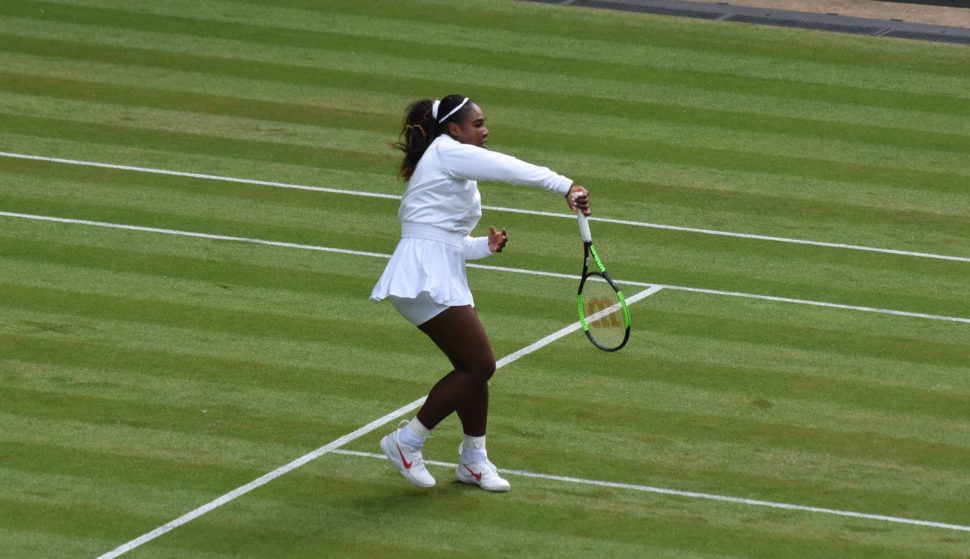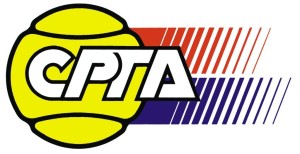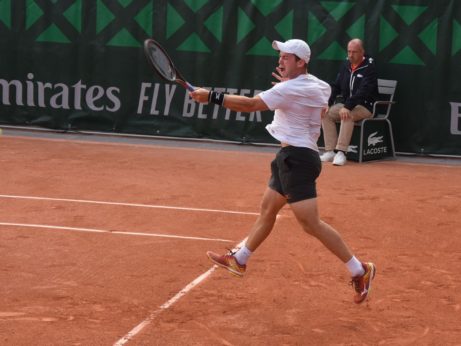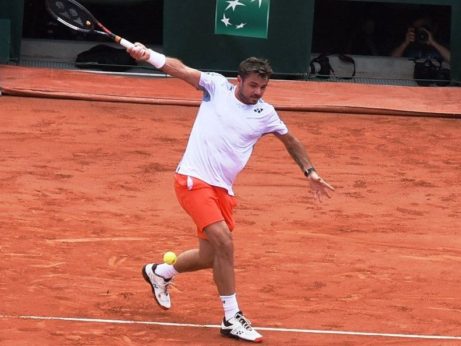Serena Williams – Overhead 3.0

American tennis icon Serena Williams (*1981 / USA) is famous for her very powerful and mostly very reliable Service 3.0, which we have introduced here earlier. As it is quite typical with most of the very well serving players, she has also a very sound Overhead 3.0 (=Smash 3.0) technique.
In general, the biggest difference from the service action is that while playing the overhead most of the players are using for the racket take-back the faster upper loop. The time-efficient preparation for the overhead consists of three actions (“triple overhead action”) being taken almost simultaneously, immediately after a quick initial change of the grip into the backhand/continental position – 1/ pointing at the incoming high ball (lob) with the non-dominant hand, 2/ pivot while stepping back and slightly around with the dominant-side leg/foot and 3/ taking the racket/elbow up and back. This “triple overhead action” is being followed by the positioning footwork making an optimal impact (if possible in the front of the body and slightly on the dominant side) possible. While continuously adjusting to the incoming ball, the feet keep moving before the overhead and thus can’t be in such a calm position like during the service action. Also, the form of the push-off might vary (back foot/front foot), but the general principle of the overhead, controlled unloading of the stored energy into the targeted long-axis pronation (= internal shoulder rotation), ideally of the helix form, remains in the big picture almost the same as with the service. While some of the overheads played off the long deep lobs while running backward might have the impact slightly behind the body, practically the same technique as with the topspin services is being used then.
It’s quite common that many less experienced players tend to underestimate the importance of the overhead and mainly of the precision needed for its execution, despite the sometimes quite big available margins. Some of the typical mistakes are the overpowering of the arm/limb activity as well as the rushing of the entire stroke rhythm often leading to the skipping/reduction of certain elements, either in the “triple overhead action” or in the targeted energy unloading. In my personal opinion, it’s a crucial element in the tennis practice (player development) to realize the close connection of the service and overhead actions. Serena is then taking the overhead very seriously and as can be seen below, the main technical elements around the unloading in her overhead are practically identical with her service action.

Serena Williams (*1981 / USA) – Overhead 3.0 in a pre-match warm-up – 1 of 3 – “triple overhead action” aka pointing/pivot/racket take-back on a straight upper loop is just done and the racket starts to descend into the cocking position – as for a longer lob, push-off comes mainly from the back (right) leg – perfect head/eye control – 2018 Wimbledon Championships – London / Great Britain – June 2018

Serena Williams (*1981 / USA) – Overhead 3.0 in a pre-match warm-up – 2 of 3 – follow through 1 – energy unloading into the well-targeted long-axis pronation (=internal shoulder rotation) – the palm of the hitting (right) hand is still pointing to the outside – 2018 Wimbledon Championships – London / Great Britan – June 2018

Serena Williams (*1981 / USA) – Overhead 3.0 in a pre-match warm-up – 3 of 3 – follow through 2 – relaxation – the hitting arm is still far in the front of the body, most of the energy was spent already – 2018 Wimbledon Championships – London / Great Britain – June 2018

Serena Williams (*1981 / USA) – Overhead 3.0 in a pre-match warm-up – 1 of 3 – “triple 0verhead action” – almost finished – as for a shorter incoming lob than with the stoke shown above, significant part of the push-off comes from the front (left) leg – 2018 Wimbledon Championships – London / Great Britain – June 2018

Serena Williams (*1981 / USA) – Overhead 3.0 in a pre-match warm-up – 2 of 3 – follow through 1 aka long-axis pronation – high helix arch with the palm of the hitting (right) arm pointing to the outside – 2018 Wimbledon Championships – London / Great Britain – June 2018

Serena Williams (*1981 / USA) – Overhead 3.0 in a pre-match warm-up – 3 of 3 – follow through 2 aka relaxation part – the hitting (right) arm stays for a relatively long time in the front of the body – 2018 Wimbledon Championships – London / Great Britain – June 2018

Serena Williams (*1981 / USA) – Overhead 3.0 in a pre-match warm-up – 1 of 1 – follow through 1 – very well-controlled long-axis pronation and a perfect body posture make an optimal body energy unloading into the stroke possible – 2018 Wimbledon Championships – London / Great Britain – June 2018

Serena Williams (*1981 / USA) – Service 3.0 in a pre-match warm-up – 1 of 1 – follow through 1 aka targeted long-axis pronation – the entire body energy unloading is almost identical with the overhead action, a stronger leg action is due to a stable starting position given by the virtue of the service – 2018 Wimbledon Championships – London / Great Britain – June 2018
This article covers certain aspects of Serena Williams’ overhead/service as well as service/overhead in general only! Further extensive photo galleries and more distinct details about her overhead/service and other strokes as well as about the strokes of other players are available upon a qualified request at drmgb11(at)gmail.com. Some significant details of this kind, necessary for a peak tennis performance as well as for a sustainable tennis training/development in general, are being discussed also in the seminar “TENNIS 3.0 – Future of the Game”, which is available worldwide upon request – www.tennis30.com / www.tennis30.cz
Photos (June 2018) & text (March 2019) copyright by Dr. Martin G. Baroch. Any further publication of either any of the photos and/or texts with the explicit written permission issued solely by the author/copyright owner only!! All instruction provided reflects just the personal opinion of the author and neither the author nor the CPTA accepts any responsibility for potential damages, direct or implied, of any kind!!



